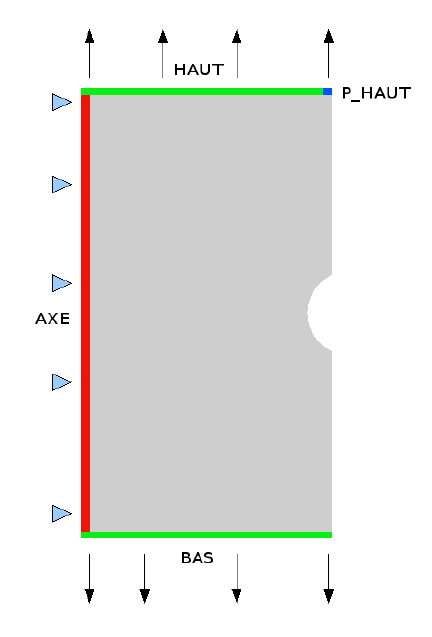1. Reference problem#
1.1. Geometry#
We consider a notched plate with a height of \(10\mathit{dm}\). With a width \(3\mathit{dm}\) and a notch radius \(1\mathit{dm}\).

Figure 1: Representation of the problem
1.2. Common properties of the material#
The material in question is assimilated to concrete (we work on a decimeter scale):
Elastic characteristics:
\(E\mathrm{=}3.E10\text{Pa}\mathrm{=}3.E8{\text{N/dm}}^{2}\)
\(\nu =0.2\)
Tensile elasticity limit of the law of damage:
\(\mathit{SY}\mathrm{=}3.E4{\text{N/dm}}^{2}\mathrm{=}3.E6\text{Pa}\)
Energy release rate per crack surface (Griffith constant):
\({G}_{f}\mathrm{=}10\text{N/dm}\mathrm{=}100{\text{J/m}}^{2}\)
1.3. Boundary conditions and loads#
Block: \(\mathrm{DX}=0\) on a group of nodes located in the middle of the axis (\(x=0.\)), in order to ensure the maintenance of the structure.
Load: Imposed or controlled displacement (varies according to the modeling) in the direction of traction.